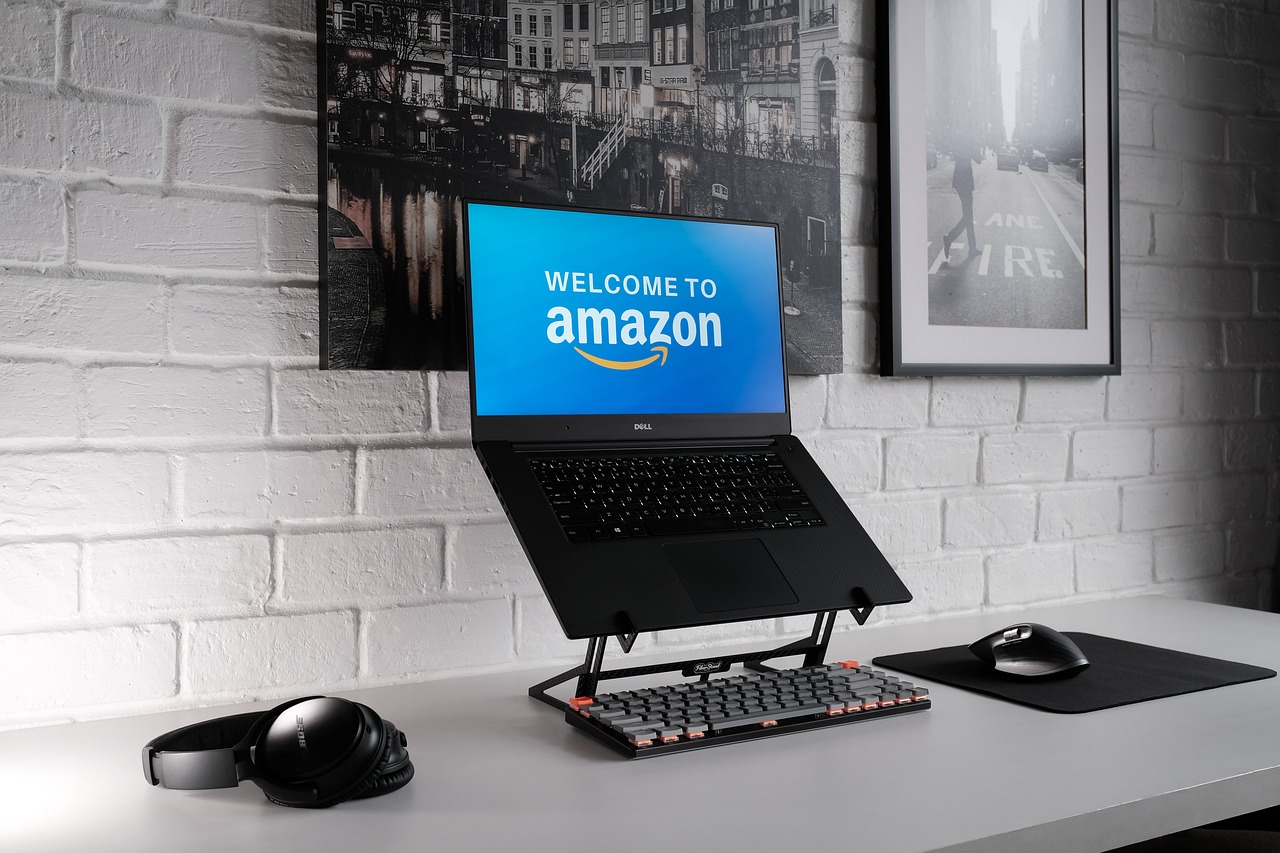
Introduction to Amazon FBA
- Amazon FBA, or Fulfillment by Amazon, is a robust logistics program designed to streamline the e-commerce experience for sellers. Under this program, sellers can store their products in Amazon's expansive network of fulfillment centers. When an order is placed, Amazon takes on the responsibility of picking, packing, shipping, and providing customer service for these products, vastly simplifying the logistics and operational challenges faced by sellers.
- The core advantage of using Amazon FBA lies in its ability to free up time and resources. Sellers no longer need to worry about maintaining storage facilities, handling shipping logistics, or managing returns. This significantly reduces the barriers to entry in the e-commerce space, allowing sellers to invest more of their energy into strategic elements such as product sourcing, marketing, and scaling their business.
- Additionally, products fulfilled by Amazon often enjoy improved visibility and trust among consumers, partly due to their eligibility for Amazon Prime. This can lead to higher sales volumes as Prime members prefer products that guarantee fast and reliable shipping. The comprehensive customer service support handled by Amazon also ensures that any buyer queries or issues are resolved promptly, enhancing overall customer satisfaction and loyalty.
- In summary, Amazon FBA serves as an efficient and scalable solution for sellers looking to optimize their business operations. By managing the intricate details of order fulfillment, Amazon FBA enables sellers to focus on growth-driving activities, making it an invaluable tool for achieving success in the competitive e-commerce market.
Setting Up Your Amazon Seller Account
- Setting up your Amazon Seller account is an essential step in launching a successful Amazon FBA business. To begin, navigate to the Amazon Seller Central website and sign in using your existing Amazon account or create a new one specifically for your seller activities.
- Amazon offers two types of seller accounts: Individual and Professional. The Individual account is best suited for those who plan to sell fewer than 40 items per month and features a per-item fee structure. On the other hand, the Professional account is designed for high-volume sellers and requires a monthly subscription fee but offers access to various selling tools and reports that can significantly enhance your business operations.
- For most serious sellers, the Professional account is the preferable option due to its comprehensive features, including bulk listing capabilities, detailed sales data, and eligibility for top placement on product detail pages. Such features can provide a significant advantage in managing inventory and scaling your business.
- The verification process involves several steps to confirm your identity and legal business status. You will need to provide a valid government-issued ID, tax information, and your bank account details for deposits. Occasionally, Amazon requests additional documentation, such as utility bills or bank statements, to further validate your information. Ensuring that all your documents are accurate and up-to-date will facilitate a smooth verification process.
- Once your account is verified, you can proceed with the initial account settings. This includes configuring your seller profile, setting shipping preferences, and establishing payment methods. It is crucial to provide clear and concise information in your seller profile, as this helps build trust with potential customers. Additionally, setting competitive shipping rates and reliable payment methods can enhance customer satisfaction and foster repeat business.
- Completing these steps correctly ensures that your Amazon Seller account is set up for success, allowing you to focus on sourcing products and growing your Amazon FBA business effectively.
Product Research and Selection
- Choosing the right products to sell on Amazon is crucial for success with Amazon FBA. Thorough market research lays the foundation for a profitable venture. Utilizing tools such as Jungle Scout, Helium 10, and Amazon's own resources can significantly enhance the process of product discovery and analysis.
- Begin by identifying a niche that interests you but also ensures consistent demand. Tools like Jungle Scout and Helium 10 provide valuable insights into product trends, sales volume, and seasonality, allowing you to make informed decisions. Amazon's Best Sellers and Movers & Shakers lists are also useful for discovering trending products.
- Once a potential product is identified, evaluating demand and competition is essential. High demand with low competition is the ideal scenario. Jungle Scout and Helium 10 offer features like keyword search volume and competitive analysis, breaking down the numbers to show potential opportunity and saturation. Analyzing customer reviews and feedback can also reveal market gaps and opportunities for product improvement.
- Profit margins are another critical factor. Calculate all associated costs, including manufacturing, shipping, Amazon fees, and advertising. Tools like the FBA Calculator can assist in estimating costs and profitability. Aim for products with a minimum of 30-50% profit margins to ensure a healthy return on investment.
- Sourcing options must also be considered. Establishing reliable relationships with manufacturers or suppliers is key. Platforms like Alibaba and Global Sources connect sellers with manufacturers, enabling negotiations for better price points and quality assurance. Private labeling can be another profitable route, allowing you to build a unique brand around your product.
- In essence, successful product research and selection require diligence, strategic use of analytic tools, and careful assessment of various market factors. By investing time in this initial phase, you set the foundation for a profitable and sustainable Amazon FBA business.
Sourcing Your Products
- Sourcing products for Amazon FBA involves selecting the right method that aligns with your business model and goals. Various options, each with distinct benefits and drawbacks, are available to meet different needs. One popular method is wholesale sourcing, which involves purchasing products in bulk directly from manufacturers or distributors at discounted rates. The primary advantage is reduced per-unit cost, allowing for competitive pricing. However, this approach requires significant upfront investment and inventory management.
- Private labeling is another lucrative option. This involves sourcing generic products, rebranding them under your name, and selling them on Amazon. The advantage here lies in brand ownership, leading to higher profit margins and reduced competition. On the flip side, private labeling demands thorough market research, capital for branding, and longer lead times for production and shipping.
- Retail arbitrage is a widely acknowledged method, particularly for beginners. This entails buying discounted products from retail stores and reselling them on Amazon at a higher price. Generally, it requires less initial investment and allows for quick turnovers. Despite its advantages, retail arbitrage can be time-consuming, and the margins are usually lower due to competition and variable pricing.
- Lastly, dropshipping is a method where you list products in your Amazon store without holding inventory. Once a sale is made, the supplier ships the product directly to the customer. This minimizes risk, as there’s no need for upfront stock purchases. However, dropshipping can lead to longer delivery times and dependency on suppliers' stock and reliability. Quality control is also a significant concern.
- To ensure reliable product sourcing, consider leveraging platforms like Alibaba that connect buyers with suppliers globally. When using such platforms, scrutinize supplier ratings, request product samples, and establish clear communication lines to mitigate potential issues. Additionally, exploring domestic sources can result in faster shipping times and reduced import duties, enhancing customer satisfaction.
Creating High-Converting Product Listings
- An essential aspect of maximizing profitability with Amazon FBA is creating high-converting product listings. A compelling product listing comprises several key elements: an attractive title, detailed bullet points, engaging descriptions, and high-quality images. Each of these components plays a crucial role in both capturing the attention of potential buyers and converting that attention into sales.
- To begin with, the product title is the first element that customers will notice. It should be informative and include the primary keywords that best describe the product. A well-crafted title balances clarity and keyword optimization, making it easier for customers to find the product and understand what it offers at a glance.
- Bullet points serve to highlight the product's main features and benefits succinctly. Effective bullet points are concise yet sufficiently detailed to provide valuable information quickly. They should focus on the unique selling points of the product, addressing common customer questions and needs. Using strong action words and clear, non-technical language can make these points more persuasive.
- The description offers an opportunity to further expand on the product's attributes and uses. This section should be written in a coherent, engaging manner that inspires trust and interest. Including a mixture of detailed information, customer testimonials, and use-case scenarios can help create a more vivid picture of the product for potential buyers. Additionally, maintaining an appropriate keyword density within the description ensures improved search visibility without veering into keyword stuffing.
- High-quality images are vital as they provide the visual appeal necessary to attract and retain shopper interest. Multiple images showing the product from different angles, in various use cases, and highlighting specific features can set your product apart from competitors. Ensuring these images meet Amazon's resolution and quality standards is essential, as poor-quality visuals may deter potential customers.
- Lastly, conducting thorough keyword research is fundamental to optimizing your listing. Identify and incorporate relevant keywords that prospective buyers are likely to search for. Tools such as Amazon’s own search bar, as well as third-party keyword research tools, can help in discovering these high-value terms. By integrating these researched keywords naturally across the title, bullet points, and description, you can significantly enhance the product’s discoverability and conversion rates.
Pricing Your Products Competitively
- Pricing your products competitively on Amazon is a critical determinant of your success. Striking a balance between attracting buyers and maintaining profitability involves employing a blend of pricing strategies. To begin with, cost-based pricing is an elemental method. This approach involves calculating all associated costs, including manufacturing, shipping, and Amazon fees, and then adding a profit margin to establish your selling price. It ensures that you cover your expenses while earning a profit.
- Another effective strategy is competitor-based pricing. In this method, you closely monitor your competitors' prices for similar products. By understanding the market landscape, you can adjust your prices to be more competitive, thus increasing your chances of securing sales. Tools such as the Amazon Pricing Dashboard can assist in analyzing competitor prices and trends, granting you an edge in the marketplace. For items where competition is fierce, this approach can be particularly effective in gaining a foothold.
- Dynamic repricing is a sophisticated and versatile strategy that leverages automation to keep your prices competitive. By utilizing repricing tools, sellers can automatically adjust their prices in response to changes in competitor pricing, market demand, and inventory levels. These tools help maintain optimal pricing without requiring constant manual adjustments, saving you valuable time. For instance, an Amazon Repricer tool can ensure your prices remain competitive while maximizing profitability.
- An essential factor to consider in all pricing strategies is understanding Amazon's fee structure. Fees such as referral fees, fulfillment fees, and variable closing fees can significantly impact your profit margins. Accurate calculation of these fees is crucial to set a competitive yet profitable price. Utilizing Amazon’s fee calculator can help predict how these fees will affect your bottom line.
- Pricing your products competitively requires a strategic approach, combining cost-based pricing, competitor analysis, and dynamic repricing, all while keeping a keen eye on Amazon fees. By leveraging these strategies and tools, you can achieve a pricing model that attracts buyers and ensures your business remains profitable.
Marketing and Promoting Your Products
- Marketing and promoting your products on Amazon can significantly boost their visibility and drive sales, making it a crucial aspect of your Amazon FBA strategy. One of the most effective tactics involves leveraging Amazon's PPC (Pay-Per-Click) advertising. With PPC, you can bid on keywords relevant to your products, ensuring they appear in prominent positions within search results or product pages. This targeted approach not only increases visibility but also drives qualified traffic to your listings, leading to higher conversion rates.
- Running promotions and deals is another potent marketing strategy. Amazon offers various promotional tools, including Lightning Deals, Coupons, and the Early Reviewer Program. These tools can create urgency and incentivize customers to purchase, thereby boosting your sales volume. For instance, Lightning Deals can spur a surge in sales in a limited timeframe, improving your product’s rank and reviews.
- Social media marketing also plays a pivotal role in product promotion. Platforms like Facebook, Instagram, and Pinterest allow you to reach a broader audience and generate buzz around your products. Engaging content, influencer partnerships, and targeted ads can drive traffic to your Amazon listings. Launching a dedicated social media campaign can help you build brand awareness and foster a loyal customer base.
- Optimization for Amazon's A9 algorithm is fundamental for product ranking. This involves using relevant keywords in your product titles, descriptions, and backend search terms. High-quality images, compelling bullet points, and detailed descriptions can enhance your listing’s appeal and rank. Ensuring your product receives positive reviews and maintaining high seller ratings also influences your ranking on Amazon.
- Measuring and tracking the success of your marketing efforts is essential. Utilize Amazon’s analytics tools, such as the Advertising Reports and Sales Dashboard, to monitor key metrics like impressions, click-through rates, and conversion rates. Adjust your strategies based on data insights to optimize performance and maximize ROI.
Managing Your Inventory and Scaling Your Business
- Efficient inventory management is crucial for a successful Amazon FBA business. To maintain optimal stock levels and avoid the pitfalls of stockouts or excess inventory, accurate demand forecasting is paramount. By analyzing past sales data and trends, sellers can predict future demand and adjust their inventory levels accordingly. This proactive approach helps in maintaining a balance that supports consistent sales without overcommitting resources.
- One effective strategy involves utilizing inventory management software to streamline operations. Tools like Inventory Lab, RestockPro, and Forecastly offer automated solutions for tracking inventory levels, alerting sellers when stock is low, and predicting future inventory needs based on sales data. These tools not only save time but also reduce human error, leading to more efficient inventory control.
- Another critical aspect of managing inventory is addressing stockouts and excess inventory. Stockouts can be detrimental, leading to lost sales and customer dissatisfaction. Conversely, holding too much inventory can tie up capital and incur storage fees. Employing a just-in-time inventory strategy can mitigate these risks by aligning stock levels closely with actual sales. Additionally, periodic inventory audits can identify slow-moving products, allowing sellers to implement clearance sales or promotional discounts to move excess stock.
- Scaling your Amazon FBA business goes hand-in-hand with effective inventory management. Expanding the product line is one avenue for growth. By diversifying offerings, businesses can tap into new customer segments and reduce the risk associated with reliance on a single product. Furthermore, entering new markets—whether geographical or demographic—can significantly enhance growth potential. This expansion necessitates robust market research to understand the target audience and adapt strategies accordingly.
- Optimizing operational efficiency is another vital factor for scaling. Implementing systems that automate routine tasks, such as order processing and inventory updates, not only enhances productivity but also frees up time to focus on strategic growth initiatives. Leveraging tools that integrate with Amazon's ecosystem ensures seamless operations, allowing businesses to scale sustainably.


